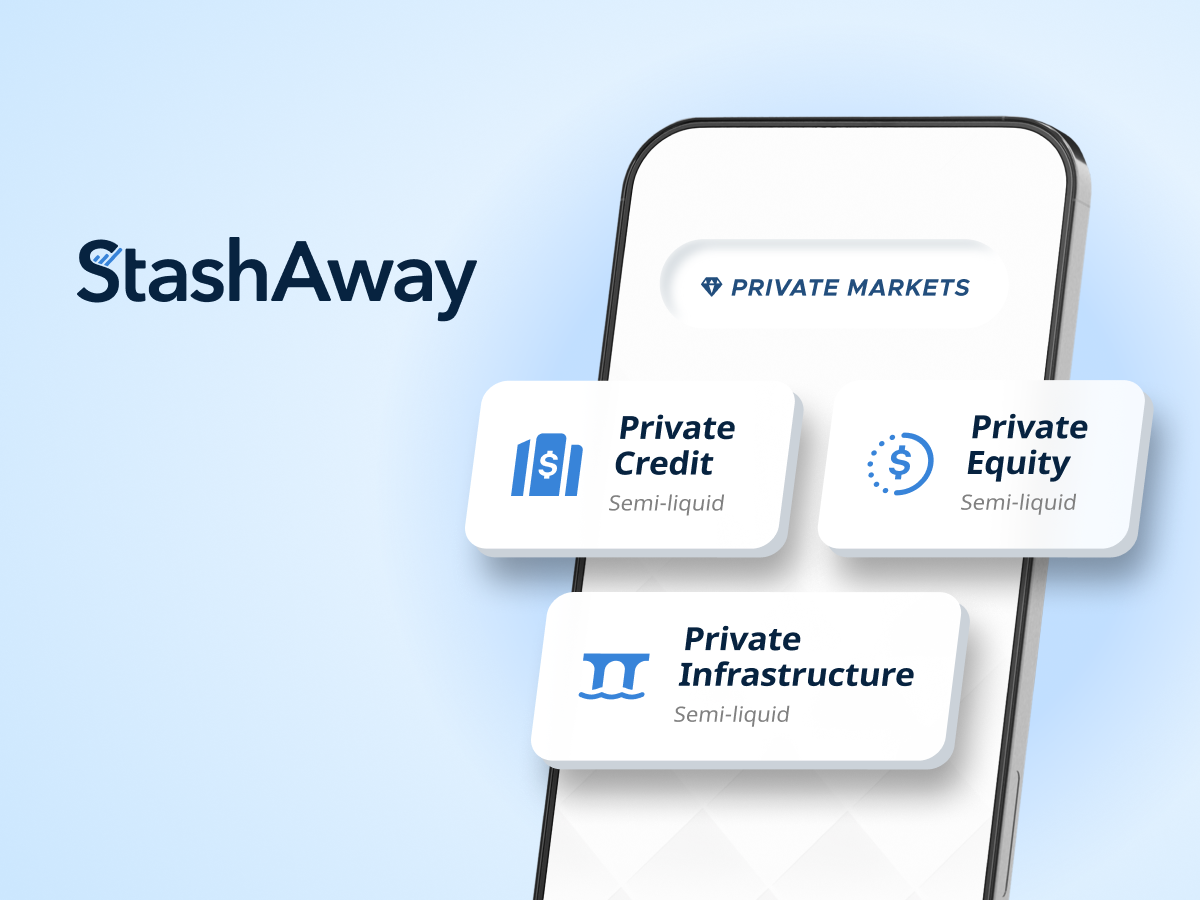Financial Features
How Embedded Finance Transforms Supply Chains and Fuels Unprecedented Growth

By Vinay Kapoor, Executive Vice President, Triterras
In the heart of the Middle East, the United Arab Emirates (UAE) is undergoing a profound transformation in its business landscape, propelled by the groundbreaking influence of embedded finance. This innovative financial paradigm is not only reshaping traditional structures but also fundamentally altering the way businesses conduct transactions, manage financial risks and navigate the complex financial landscape.

Vinay Kapoor, Executive Vice President, Triterras
At its core, embedded finance involves integrating financial services seamlessly into non-financial platforms, weaving banking functionalities into everyday activities. This innovation allows businesses to offer financial services as part of their core offerings, creating a seamless and integrated customer experience. As we delve into the transformative era of embedded finance in the UAE, the impact is profound, influencing how businesses interact with, and leverage financial tools to enhance operational efficiency and customer engagement.
The UAE, comprising of seven emirates, has strategically transitioned from being a logistics-centric hub to a comprehensive business nerve centre, strategically catering to Asia, Europe and the Middle East and Africa (MEA). This strategic shift is a result of the UAE’s commitment to economic diversification initiatives, the meticulous implementation of national logistics plans and the widespread adoption of cutting-edge digital technologies.
Embedded finance, with an annual growth rate projected at an impressive 30.1% until 2029 in the UAE, stands as a beacon of this transformative journey. At the forefront of this financial revolution is embedded payments, a phenomenon that seamlessly integrates digital payment options within non-financial platforms. This integration streamlines the payment process, enabling customers to make transactions without leaving the website or app. Instant payments and digital wallets like Payit have become integral, illustrating how financial transactions are now seamlessly embedded into the daily operations of businesses, enhancing transaction efficiency and elevating customer experiences.
Another dynamic facet of this transformation is embedded insurance, a strategy that involves selling insurance alongside another product or service, typically at the point of sale. The concept of add-on insurance for products or travel, for example, not only enhances customer confidence but also mitigates risks for both consumers and businesses. In the fiercely competitive market of the UAE, this integrated approach serves as a valuable differentiator, fortifying businesses against unforeseen challenges.
Embedded lending services are actively bridging financial gaps within businesses by providing easier access to credit. The rise of Buy Now, Pay Later (BNPL) services, SME financing and co-branded credit cards exemplify this trend. These lending solutions empower businesses to manage their finances more efficiently, fostering growth and innovation. The impressive growth projection of BNPL services at a CAGR of 13.1% during 2023-2028 in Saudi Arabia underlines the transformative impact of embedded lending in the region.
Embedded investing is also making waves, democratizing wealth management services. Businesses can now seamlessly offer investment opportunities integrated into their digital platforms. Non-financial companies, such as the ride-hailing giant Careem, have ventured into investment products, marking a departure from traditional financial institutions and creating a more inclusive approach to wealth creation.
While the prospects of embedded finance are promising, it is crucial to address challenges such as regulatory frameworks, data security concerns and ensuring transparency in financial practices. Navigating these challenges adeptly presents opportunities for businesses operating in the UAE. The integration of embedded finance not only opens new revenue streams and enhances customer loyalty, but also establishes a symbiotic relationship between financial and non-financial entities.
The UAE government has taken bold initiatives to bolster the nation’s financial infrastructure, seamlessly aligning with the rise of embedded finance. For instance, the Central Bank of UAE launched the Financial Infrastructure Transformation Programme, a pivotal initiative to accelerate digital transformation in the financial sector. This program supports digital transactions, fosters innovation and positions the UAE as a hub for financial excellence. Such initiatives foster a climate conducive to greater financial integration, digitalization and sustainability in business operations. As businesses navigate this new era, where financial services seamlessly intertwine with their core operations, the UAE stands at the precipice of a new financial landscape.
One of the noteworthy impacts of embedded finance, is its transformative effect on the supply chain in the UAE. The efficiency gains achieved through streamlined payments, innovative lending solutions and enhanced financial management directly contribute to a more interconnected, efficient and resilient supply chain ecosystem.
In the context of the supply chain, embedded payments play a pivotal role. The seamless integration of digital payment options reduces friction in transactions, expediting the entire procurement process.
Suppliers and manufacturers can now receive instant payments, improving cash flow and reducing the need for complex invoicing procedures. This not only accelerates the pace of transactions, but also minimizes delays and uncertainties in the supply chain.
Furthermore, embedded lending solutions such as BNPL services and SME financing, inject liquidity into the supply chain. Businesses can access credit more easily, allowing them to optimize inventory levels, meet sudden demand surges and navigate through seasonal fluctuations. This financial flexibility enhances the resilience of the supply chain, ensuring a continuous and smooth flow of goods and services.
Embedded insurance contributes to risk mitigation within the supply chain. The ability to purchase insurance at the point of sale provides businesses with an additional layer of protection against unforeseen disruptions. Whether it is insuring shipments against damages or protecting against financial losses due to unforeseen events, embedded insurance fosters a more secure and reliable supply chain environment.
Moreover, embedded finance facilitates strategic partnerships within the supply chain. Businesses can collaborate more seamlessly, leveraging shared financial platforms and services. This not only streamlines payment processes between partners, but also fosters trust and transparency in financial transactions. Collaborative financial tools, such as co-branded credit cards, enable businesses to jointly invest in initiatives that enhance the efficiency and sustainability of the supply chain.
The versatility of embedded finance is evident in its application across various non-financial customer journeys, including ride-hailing, food delivery and in-store retail experiences. This versatility enables businesses to adapt to changing consumer preferences and market trends, ensuring a more dynamic and responsive supply chain.
Buy Now, Pay Later (BNPL) services emerge as a poster child within the embedded finance ecosystem, particularly in the supply chain. Despite regulatory scrutiny, the growth of BNPL payments in Saudi Arabia exemplifies the widespread adoption of this innovative financial tool. In the context of the supply chain, BNPL services empower businesses to manage cash flows efficiently, providing them with the flexibility to make payments based on the actual revenue generated from the delivered goods.
The transformative impact of embedded finance on the UAE’s business dynamics extends beyond financial services; it is redefining the very fabric of the supply chain. As businesses embrace this financial evolution, the UAE is poised to usher in an era where collaboration between financial and non-financial entities propels unprecedented economic growth and innovation. Embedded finance, with its seamless integration into supply chain operations, is revolutionizing the way transactions occur, creating a more interconnected, efficient, and resilient ecosystem that will define the future of commerce in the UAE.
Financial
The StashAway Story and the Future of Digital Investing

By Srijith KN, Senior Editor
Financial Integrator

StashAway’s journey began when Co-founder and CEO Michele Ferrario found himself frustrated and dissatisfied with the investment landscape marked by high fees and a lack of transparency. By age 35, his corporate career had provided him with substantial savings — yet when he approached his banks to invest in a portfolio of ETFs, he was sold expensive products that didn’t fit his needs.
This frustration inspired him to create a platform that would simplify investing while providing access to sophisticated financial products. In July 2016, he, along with the other two co-founders, came together, and by July 2017, after navigating regulatory requirements, StashAway was launched in Singapore.
“Stash,” as the word suggests—meaning to store something safely for future use—perfectly reflected what he wanted to achieve for himself. Over the past nine years, that personal need has grown into a company of more than 200 professionals, operating across five regions through a single, centralized technology platform.
Today, StashAway stands out as a pioneer in digital wealth management. The company leverages technology and deep investment expertise to offer accessible, low-cost alternatives to traditional wealth management, with a particular focus on private markets. Its approach has resonated with clients and positions the firm to benefit from regional economic growth and an increasingly digitally savvy population.
In the UAE, StashAway operates from the DIFC and has extended its presence to Malaysia, Thailand, and Hong Kong, with a chief investment officer based in Hong Kong overseeing investment strategies.
Democratizing Access to Investments
The company’s core strategy revolves around democratizing access to sophisticated investments. Private markets, which historically deliver higher returns at lower volatility, are central to this approach. By making private market products for a fraction of traditional minimums, StashAway removes the barriers that have long prevented high-net-worth individuals from participating in this fast-growing asset class. The platform also emphasizes transparency, with fees typically 50–75% lower than competitors, avoiding the hidden charges common in conventional wealth management products.
In public markets, StashAway offers an ETF-based, globally diversified portfolio called General Investing. The General Investing portfolio uses a proprietary investment strategy called ERAA (Economic Regime Asset Allocation). They have recently launched Sharia Global Portfolios, offering the same approach in a Sharia-compliant format. These Flexible Portfolios allow customers full control to create their own allocations using ETFs—either by using an existing template or building a portfolio entirely from scratch.
Capitalizing on the UAE Market
The UAE market presents a unique opportunity for StashAway. The region is home to a digitally engaged population with significant underinvested wealth. While 81% of financial wealth in the UAE is investable, nearly half remains in cash, losing value to inflation. StashAway’s platform appeals to a diverse range of clients, from seasoned executives to younger retail investors, aligning perfectly with regional growth initiatives like Dubai 2033, which targets strong GDP growth and population expansion.

A Comprehensive, Client-Focused Approach
What sets StashAway apart is its comprehensive, client-focused approach. Its offerings include globally diversified portfolios, flexible build-your-own options, Sharia-compliant solutions, thematic strategies, and access to private equity, infrastructure, and private credit for accredited investors. The platform’s investment philosophy is long-term, balancing risk and reward according to individual goals, while its high service standards ensure responsive client engagement. And thus far I have been having a frictionless digital experience and went through a quick onboarding process. Client acquisition is primarily driven online, with dedicated advisors for high-net-worth clients under StashAway Reserve. Other users can engage through the app and are supported by StashAway’s responsive client experience team through email, phone call, or WhatsApp.
Shaping the Future of Digital Investing
As the UAE continues to attract global wealth, its wealth management landscape is becoming increasingly digital, with affluent investors seeking alternative investment opportunities. In an industry often criticized for opacity and complexity, StashAway is redefining investing by making it more transparent, accessible, and tailored to the modern investor. By combining advanced technology, strategic insight, and personalized solutions, the company is not just managing wealth—it is shaping the future of digital investing in the UAE and across the region.

_________________________________________________________
The Brief:
StashAway is a digital investment platform that was launched in 2017 to empower people to build and protect wealth in the long term. Offering simple, intelligent, and cost-effective investment and cash management solutions, StashAway has led the way in transforming the way people invest and grow wealth. Today, StashAway operates in five markets, Singapore, Malaysia, Hong Kong, the UAE, and Thailand, with billions of dollars in assets under management. The company was recognised by The World Economic Forum as a Technology Pioneer in 2020 and ranked among CNBC’s World’s Top Fintech Companies in 2023, 2024, and 2025.
Financial
FASTER, MORE ACCURATE FINANCIAL REGULATION: HOW CAN 2026 UNLOCK REGULATION THAT SUPPORTS A FUTURE-READY ECONOMY

Author: Alan Blanchard, Business Development Director for TSO, has been responsible for digital transformation both as a regulator and consultant. In his current role he helps organisations to publish regulations more effectively.
In a rapidly evolving global regulatory and innovation environment, the resilience and growth of economies depends on their ability to adapt and innovate. The United Arab Emirates is widely recognised for its forward-thinking regulatory authorities, which consistently encourage the adoption of new technologies and work collaboratively with industry leaders to build new regulatory rails for exponential technologies that have yet to embed into the traditional business systems. As a future-ready financial hub, investment in digitisation of rules can help harness innovation and create growth.
Transparency: the cornerstone of market confidence
In the financial sector, regulation and financial frameworks serve as the backbone of market integrity and investor confidence, but the challenge today is sheer scale. Firms must keep pace with a near constant stream of rule changes across major jurisdictions, and the cost of financial crime compliance alone is about 206 billion dollars a year globally. Transparency and clear communication of these rules inspire confidence in markets. When regulatory expectations are accessible and consistently applied, market participants can plan, invest, and innovate with certainty. This confidence is essential not only for established institutions but also for new entrants, because when compliance becomes too complex and slow, entry drops sharply, as seen in the US where regulators approved only about five new bank charters per year on average from 2010 to 2023.
The policy and supervisory role of financial regulators has become increasingly complex. Rapid technological advancements, fintech companies, cryptocurrencies and globalisation mean that regulators need to continually adapt to protect consumers and the integrity of financial systems. The landscape demands agility and collaboration to effectively manage challenges. A significant barrier to transparency and innovation in regulation is the persistence of legacy formats such as PDF rulebooks and siloed regulatory handbooks. These formats can be difficult to search, interpret, and apply, particularly for new market entrants or technology-driven firms.
Modernising regulatory frameworks involves more than simply updating existing rules; it requires a fundamental rethinking of how regulations are designed, communicated, and implemented.
Unlocking regulation and moving to rules as code
Unlocking regulation means transforming legacy documents into machine-readable formats that make regulation easier to find, use, and understand. This shift not only lowers the barriers for new players but also supports RegTech solutions; technologies designed to streamline compliance, automate reporting, and provide real-time regulatory insights.
Machine readable rules and rules as code can deliver improved interoperability between firms and regulators, simplify change management, and remove barriers to entry for market participants. The first step is to convert legacy unstructured documents, such as PDFs, into more useful and manageable machine-readable formats such as XML, identifying headings, parts, sections and numbering and adding structure to the content. This structured content makes it possible to present the rules in different ways to meet the needs of regulated organisations, for example contextualising rules with a timeline of changes on a website, or publishing via an API to enable organisations to consume the rules as data.
As well as making rules easier to understand, structured data enables faster and more accurate editing workflows. Content can be managed at paragraph level, enabling relationships to be made and references to be added. Editors can self-serve using a Content Management System to edit content at a paragraph level and view the revised content immediately for proofing.
What this means for the future
Digitising and structuring regulatory information creates several tangible benefits. Firms can quickly and accurately understand their compliance responsibilities through improved search and better presentation of the rules that apply to them. Enhanced interoperability enables data sharing across different systems and institutions without manual reformatting. Machine-readable rules and rules as code create the possibility of automated compliance checks, better integration with RegTech solutions, and even the ability to simulate the impact of regulatory changes before implementation. An additional benefit of structured data is that it makes it easier for AI to use accurately, enabling large amounts of information to be summarised, connected and queried using day to day language.
The transition to digital, machine-readable regulations not only enhances transparency and efficiency but also fosters an environment conducive to innovation and growth. By leveraging structured content, regulation as code, and collaborative policymaking, regulators can create more agile, responsive, and user-friendly frameworks that better reflect the realities of financial markets today and in the future.
Financial
AI gives Gulf banks the edge in managing liquidity with confidence

Integrated platforms and data-driven agility will allow IFIs to meet rising expectations and shape global standards
By Matthew Nassau, Business Architect, Treasury & Capital Markets at Finastra
Markets move in cycles. Each generation experiences most of the things that previous generations have endured (bull or bear markets, natural disasters, geopolitics, …) punctuated by turning points from which the future takes a distinct path (powered flight, the transistor, The Beatles, …). These highlights are often recognized early on as important in their day and seem to appear ‘overnight’, and yet have taken years of development and formation to appear in our consciousness, while the lasting extent of their transformative power is not fully appreciated.
Generative AI (GenAI) fits the model described above, poised as it is to revolutionize treasury and capital markets by markedly altering decision-making processes for market professionals. From conversational finance to predictive analytics, AI is evolving from a mere assistant to becoming a crucial decision-making tool. In Gulf Cooperation Council (GCC) countries, GenAI could add between USD 21 billion and 35 billion each year, on top of roughly USD 150 billion that existing AI technologies are expected to contribute. That represents about 1.7 to 2.8% of the region’s current non-oil GDP.
To deliver on this potential, it is essential that financial institutions have access to high-quality data, upon which GenAI can infer connections, deliver insights and enable actions.
Data has never looked so good
Data has long been treated as one of the most important assets in financial services. Vendors have built major businesses supplying real-time market feeds, and institutions invest heavily to safeguard customer information in every form. The value is clear. What is changing is how much more that value can grow as GenAI gains access to richer and more precise datasets. Large language models can spot relationships and trends that were previously buried, turning raw information into forecasts, alerts and actions that support commercial and risk decisions.
Unlocking that potential requires broader access to the information that treasury teams already rely on. Data lakes and warehouses form part of the picture, but they rarely capture everything. Treasury management systems are a prime example. Their reporting evolves constantly and plays a central role in liquidity decisions, yet much of it remains confined within the system. By making these reporting histories available to GenAI, banks can reveal patterns over time, flag emerging opportunities or risks and prompt timely intervention.
Timing is everything
To show how quickly things have shifted, consider a discussion I had with a major European bank a few years ago. The team was exploring how to treat treasury and capital markets data as a strategic asset without forcing everything into one central system. Their vision was a unified data layer where information could stay within existing applications yet still be accessed, combined and analyzed by staff using low code tools. The goal was to shift toward more data-driven decision making across the business and to uncover new sources of commercial value.
The concept was sound, but the technology required to deliver it at scale was simply too expensive and complex at the time. The bank had to narrow its ambitions and proceed with smaller, tactical initiatives. Artificial intelligence was not even part of the conversation. It felt experimental and far removed from daily operations.
Looking back, the idea wasn’t premature in strategy, only in timing. GenAI now makes this kind of agile, distributed data insight far more realistic.
‘Go big or go home’ – not any more
Expectations have moved on as technology has matured and become easier to access. The old way of classifying data projects as either short-term tactical fixes or long-term strategic overhauls no longer applies. GenAI changes the conversation. It shifts focus from where data lives to how much value it can generate. Deploying AI in specific functions like operations, the front office or reconciliation isn’t a stopgap. It’s a practical way to unlock intelligence quickly.
What will determine success is an institution’s ability to surface a wide range of data, ensure its accuracy and let AI learn from it. This doesn’t require a massive transformation program from day one. Starting with focused use cases can improve efficiency, reduce manual work and reveal valuable insights straight away. As more processes become AI-enabled, those individual wins begin to connect, creating a stronger and more intelligent foundation across the entire organization.
Outcomes lead to incomes
When a technology is still emerging, no one can predict with certainty how far its influence will reach. The best indicators often come from those willing to adopt early and test ideas in the real world. Many concepts compete for relevance, and only a few will ultimately reshape how people work.
The organizations that benefit most are the ones comfortable experimenting, moving quickly and learning as they go. GenAI encourages exactly that mindset. It allows teams to explore and refine new approaches by tapping into the data they already hold. The results show up in lower costs, stronger client value and healthier margins.
This shift is not about replacing existing business models but enhancing them. Each step forward can deliver outsized returns for firms confident enough to start now.
-

 Tech News1 year ago
Tech News1 year agoDenodo Bolsters Executive Team by Hiring Christophe Culine as its Chief Revenue Officer
-

 VAR9 months ago
VAR9 months agoMicrosoft Launches New Surface Copilot+ PCs for Business
-

 Tech Interviews2 years ago
Tech Interviews2 years agoNavigating the Cybersecurity Landscape in Hybrid Work Environments
-

 Tech News6 months ago
Tech News6 months agoNothing Launches flagship Nothing Phone (3) and Headphone (1) in theme with the Iconic Museum of the Future in Dubai
-
News10 years ago
SENDQUICK (TALARIAX) INTRODUCES SQOOPE – THE BREAKTHROUGH IN MOBILE MESSAGING
-

 Tech News2 years ago
Tech News2 years agoBrighton College Abu Dhabi and Brighton College Al Ain Donate 954 IT Devices in Support of ‘Donate Your Own Device’ Campaign
-

 VAR1 year ago
VAR1 year agoSamsung Galaxy Z Fold6 vs Google Pixel 9 Pro Fold: Clash Of The Folding Phenoms
-

 Editorial1 year ago
Editorial1 year agoCelebrating UAE National Day: A Legacy of Leadership and Technological Innovation











